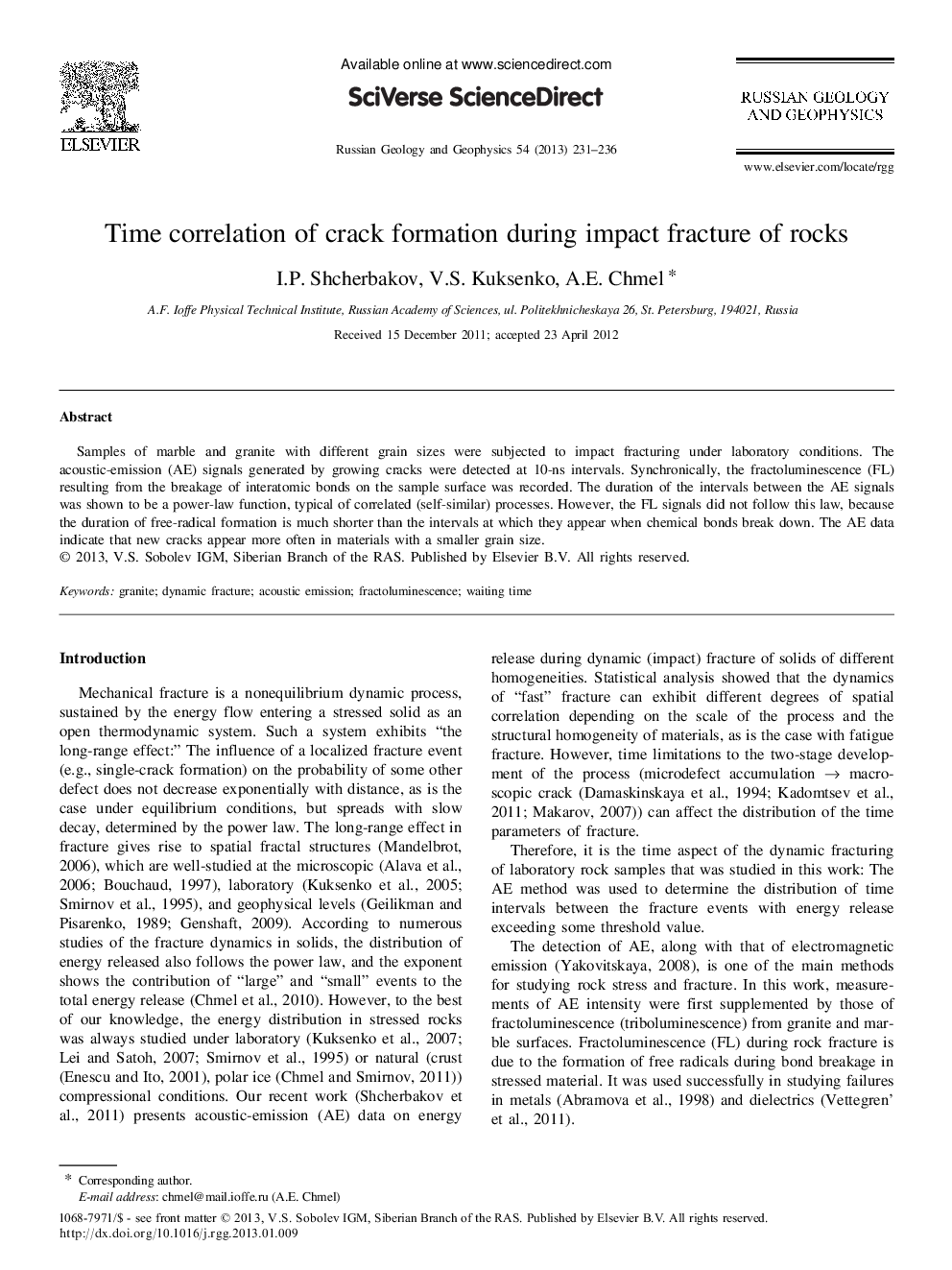| Article ID | Journal | Published Year | Pages | File Type |
|---|---|---|---|---|
| 4738525 | Russian Geology and Geophysics | 2013 | 6 Pages |
Samples of marble and granite with different grain sizes were subjected to impact fracturing under laboratory conditions. The acoustic-emission (AE) signals generated by growing cracks were detected at 10-ns intervals. Synchronically, the fractoluminescence (FL) resulting from the breakage of interatomic bonds on the sample surface was recorded. The duration of the intervals between the AE signals was shown to be a power-law function, typical of correlated (self-similar) processes. However, the FL signals did not follow this law, because the duration of free-radical formation is much shorter than the intervals at which they appear when chemical bonds break down. The AE data indicate that new cracks appear more often in materials with a smaller grain size.
